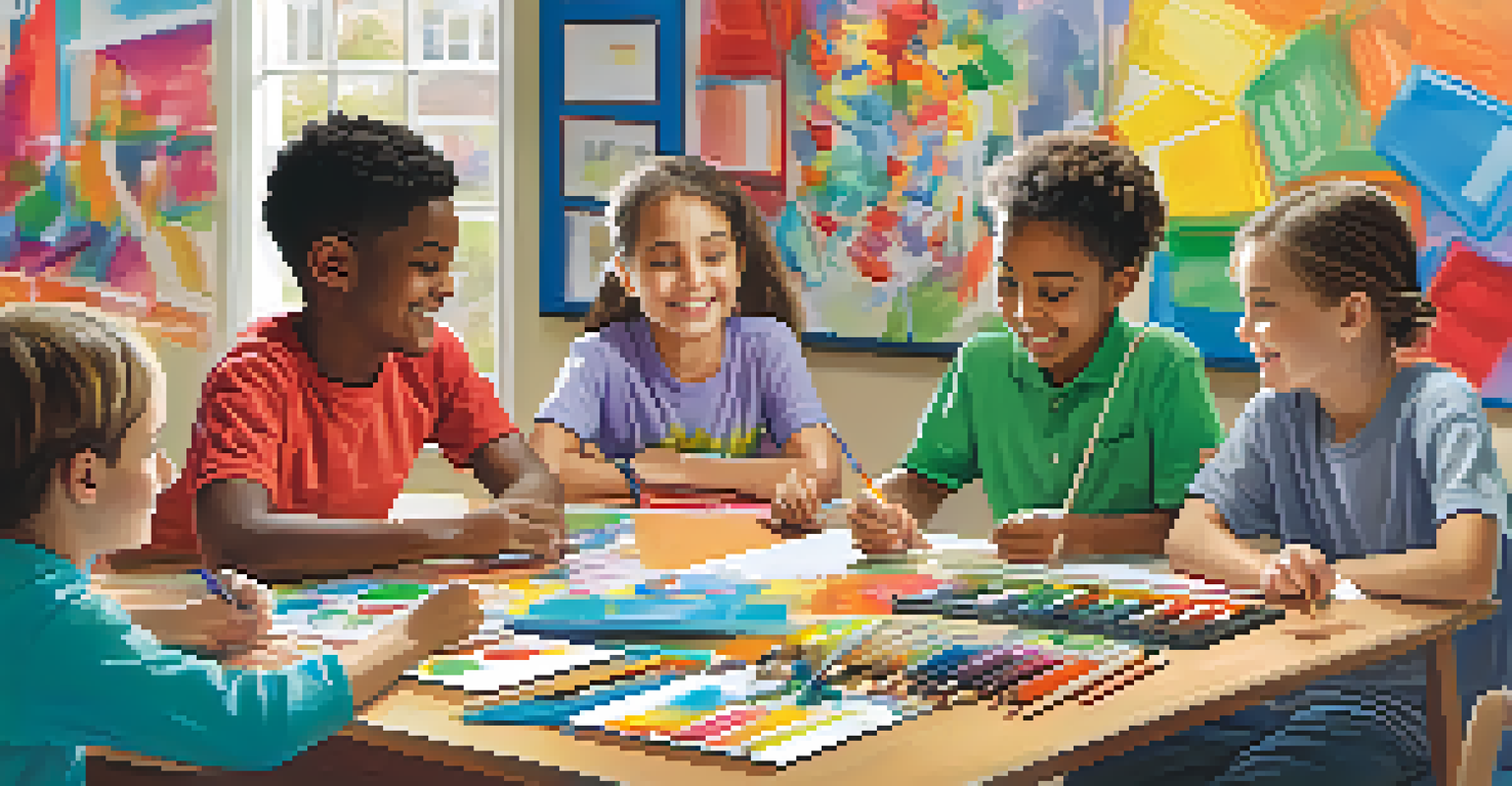Developing Emotional Intelligence in Young Learners

Understanding Emotional Intelligence and Its Importance
Emotional intelligence (EI) is the ability to recognize, understand, and manage our own emotions while also recognizing and influencing the emotions of others. In young learners, developing EI can lead to better relationships and improved academic performance. Children with high emotional intelligence are often more resilient and can handle stress more effectively.
Emotional intelligence is the key to both personal and professional success.
For instance, a child who can articulate their feelings is better equipped to navigate conflicts with peers. This ability not only fosters a healthier social environment but also promotes empathy and kindness. Schools that prioritize EI in their curriculum see students who are more engaged and cooperative.
Ultimately, fostering emotional intelligence lays the groundwork for lifelong skills such as effective communication and problem-solving. By nurturing these skills early on, we can help children thrive both academically and personally.
Creating an Emotionally Safe Learning Environment
An emotionally safe learning environment encourages children to express their feelings without fear of judgment. This can be achieved by promoting open communication and active listening among students and teachers. When children feel safe, they are more likely to share their thoughts and emotions.

Consider using circle time or group discussions as a platform for students to talk about their feelings. This not only helps them articulate their emotions but also teaches them the value of listening to others. For example, when a child shares their feelings about a tough day, their peers can learn to empathize and respond supportively.
Emotional Intelligence Enhances Learning
Developing emotional intelligence in children leads to better relationships and improved academic performance.
Creating this safe space is crucial for developing emotional intelligence, as it builds trust and fosters connections. When children know they are heard and respected, they are more likely to engage in healthy emotional expression.
Incorporating Emotional Learning into Daily Activities
Integrating emotional learning into everyday activities can enhance children's understanding of their feelings. Simple routines, like discussing emotions during morning meetings, can set a positive tone for the day. This practice encourages kids to reflect on their mood and share it with others.
The greatest ability in business is to get along with others and to influence their actions.
Additionally, educators can use storytelling as a tool to explore emotions. By reading books that highlight different feelings, children can learn to identify and discuss emotions in a relatable context. For instance, characters facing challenges can spark discussions about how similar situations might be handled in real life.
By weaving emotional learning into the fabric of daily activities, we enable children to practice and refine their emotional skills consistently. This approach not only reinforces their understanding but also strengthens their relationships with peers.
Teaching Emotional Vocabulary to Young Learners
A rich emotional vocabulary helps children articulate their feelings more clearly. Teaching them specific words to describe emotions can empower them to express themselves effectively. For example, instead of saying they're 'mad,' they might describe feeling 'frustrated' or 'disappointed.'
One effective method is to introduce an emotion chart in the classroom. This visual aid can help children identify and label their feelings, making it easier for them to communicate. Regularly using this chart can also normalize discussions around emotions and encourage children to check in with themselves and others.
Safe Spaces Foster Emotional Growth
Creating an emotionally safe learning environment encourages children to express their feelings without fear of judgment.
By expanding their emotional vocabulary, children not only learn to express themselves but also develop empathy, as they can better understand the feelings of their peers. This foundational skill is essential for building strong, supportive relationships.
Modeling Emotional Intelligence as Adults
Children learn a great deal from observing the adults around them. When caregivers and educators model emotional intelligence—by expressing their own feelings and managing stress effectively—they set an example for young learners. This modeling is crucial in helping children understand how to navigate their own emotions.
For instance, if a teacher shows how to handle disappointment by discussing their feelings and finding constructive solutions, students learn to do the same. Sharing personal experiences can demystify emotions and encourage children to engage in similar behaviors. This approach fosters an atmosphere of honesty and openness.
Ultimately, adults play a vital role in shaping the emotional intelligence of young learners. By demonstrating healthy emotional behaviors, we equip children with the tools they need to manage their own feelings and relationships.
Encouraging Empathy Through Group Activities
Empathy is a key component of emotional intelligence, and group activities can be a powerful way to promote it among young learners. Collaborative projects, team sports, or even group discussions can help children practice understanding different perspectives. These experiences cultivate a sense of community and belonging.
For example, during a group project, children can be encouraged to share their ideas and listen to others. This exchange fosters a deeper understanding of how different viewpoints contribute to a shared goal. Additionally, role-playing exercises can provide a fun way to explore empathy by allowing children to step into someone else's shoes.
Modeling Empathy Builds Connection
Adults who model emotional intelligence provide children with the tools necessary to navigate their own emotions and relationships.
Engaging in these activities not only strengthens bonds between peers but also enhances emotional intelligence. As children learn to appreciate the feelings and experiences of others, they become more compassionate individuals.
Assessing Emotional Growth in Young Learners
Assessing emotional growth can be challenging, but it is essential for understanding how well children are developing their emotional intelligence. Observations, self-reporting tools, and feedback from peers can provide valuable insights into a child's emotional journey. Regular check-ins can help track their progress over time.
Educators might consider using simple surveys or journals where children can express their feelings and thoughts on their emotional growth. This practice not only encourages reflection but also helps identify areas for improvement. For example, if a child repeatedly expresses frustration in their journal, it can be a cue for further support.

By regularly assessing emotional growth, we can better understand each child's unique emotional landscape. This knowledge enables caregivers and educators to tailor their approach and provide targeted support, ensuring that every child can develop their emotional intelligence effectively.